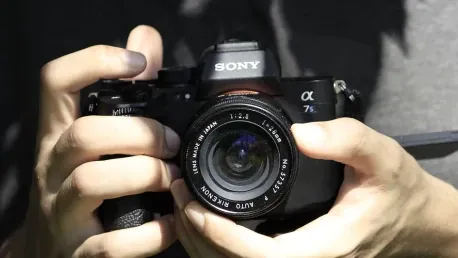The Xperia 1 VII camera has captured the tech community’s attention. As Sony prepares to unveil its latest smartphone, the question looms: Will it usher in a new era for mobile photography, or is it merely an incremental upgrade? Sony, known for its underappreciated yet powerful market presence, aims to redefine smartphone photography with the Xperia 1 VII. This device is anticipated to bring significant advancements, mainly in its camera system, which stands as the focal point for prospective buyers and industry analysts alike. Let’s delve into the details to understand what this new device promises and whether it could truly revolutionize the mobile photography landscape.
The Core of Innovation: New Sensor Technology
The heart of the Xperia 1 VII’s camera prowess lies in its sensor, which is designed to make notable contributions to the smartphone’s imaging capabilities. Sony has yet to release comprehensive technical details, leading to widespread speculation. However, the general consensus suggests a custom-designed sensor inspired by the company’s highly regarded Alpha series. This new sensor is anticipated to boast better light sensitivity and an enhanced dynamic range, making it a standout feature in the competitive market. In practical terms, users can expect substantial improvements in low-light performance, which has traditionally been a weak spot for Xperia devices.
Furthermore, the possibility of a higher megapixel count, although speculative, adds to the excitement surrounding this sensor. If realized, this would allow for more detail in photographs, making the Xperia 1 VII a formidable competitor in the smartphone camera market. Stacked CMOS sensor technology, an area where Sony excels, could also play a significant role here, adding layers of efficiency and capability. Enhanced detail capture in high-contrast scenes and potential advancements in video recording are other areas where this sensor could shine, making it a comprehensive upgrade.
Comprehensive Camera Ecosystem: Beyond the Sensor
While the new sensor is the centerpiece, the Xperia 1 VII’s entire camera ecosystem also deserves attention for its integrated advancements. The device is expected to feature notable improvements in lens systems, image processing, and software innovations, creating a holistic enhancement to the mobile photography experience. The camera will likely retain the triple-lens setup, a hallmark of previous Xperia models, but with substantial upgrades that could redefine user expectations. Enhanced lens coatings will reduce flare and increase color precision, offering significant advancements for mobile photography enthusiasts.
The possibility of a periscope zoom lens is another exciting area, suggesting better reach and superior image stabilization. These advancements would allow users to capture distant subjects with more clarity and less shake, critical for both professional and casual photographers. Upgraded image processing is another highlight, with the BIONZ X Mobile processor likely seeing enhancements for faster and more efficient performance. Sony’s prowess in image processing will potentially bring AI enhancements that improve real-time object tracking and scene recognition, adding a layer of intelligence to the smartphone photography experience.
Software innovations are also expected to play a crucial role. The continually evolving Photography Pro and Videography Pro apps will likely offer broader functionalities, empowering users with professional-grade tools right at their fingertips. Advanced computational photography techniques will bridge the gap between smartphones and high-end cameras, refined Auto HDR and enhanced night modes are on the horizon, promising a versatile and comprehensive camera system. This amalgamation of hardware and software advancements makes the Xperia 1 VII a formidable contender in the smartphone market.
Market Context and Positioning
To fully appreciate the Xperia 1 VII, it’s essential to position it within the competitive landscape of smartphones, which is more crowded and competitive than ever. Sony competes with industry leaders like the iPhone 15 Pro Max and Samsung’s Galaxy S24 Ultra, both of which set high benchmarks for performance and capabilities. Additionally, Google’s Pixel devices, known for their pioneering computational photography, add another layer of competition. Not to mention, Chinese manufacturers like Xiaomi and Vivo are making significant strides in hardware capabilities, constantly pushing the envelope.
Sony’s unique selling points lie in its manual controls and RAW support, which are particularly appealing to photography enthusiasts. Integration with Alpha cameras for remote shooting and seamless file transfers could also set the Xperia 1 VII apart from its competitors. Sony’s natural color science, which involves minimal post-processing, will attract photography purists who prefer lifelike images. This focus on natural color reproduction could give Sony a competitive edge in a market where many manufacturers rely on heavy post-processing to achieve vibrant images.
However, positioning against such heavyweights means Sony needs to manage consumer expectations carefully. While the Xperia 1 VII aims to offer advanced features and specifications, understanding its target audience and market positioning will be crucial for its success. The real-world performance and user experience will ultimately determine how well it stacks up against its competition, given the high expectations and intense rivalry in the premium smartphone segment.
Bridging Aspirations and Reality
While the anticipation for the Xperia 1 VII is undeniably high, it’s essential to temper expectations with realism, considering the competitive landscape and user demands. The Xperia 1 VII will likely see incremental improvements in image quality across various conditions rather than groundbreaking changes. Enhanced user experiences through software fine-tuning and potential breakthroughs in niche areas like action photography are more realistic expectations. While such advancements are significant, they may not be enough to overshadow the offerings from established competitors.
Sony’s commitment to a true-to-life aesthetic might not attract users who prefer highly processed images, a common trend in current mobile photography. Pro-level features, although advanced and appealing to enthusiasts, might pose a steep learning curve for casual users. Additionally, the premium pricing could limit widespread adoption, making it more attractive to niche markets or Sony loyalists rather than the general populace. This balance of aspirations and realistic improvements will be critical for the Xperia 1 VII’s reception in the market.
Moreover, the challenge for Sony lies in effectively communicating these advancements and ensuring that potential customers understand the value proposition. While the device may not disrupt the market overnight, it represents a significant step forward in Sony’s mobile imaging journey. However, whether it can capture a broader market share will depend on its ability to meet the diverse needs and preferences of today’s smartphone users. Balancing high-end features with user-friendliness and affordability will be key to its success.
Position within Sony’s Ecosystem
The significance of the Xperia 1 VII extends beyond its role as a mobile photography device, reflecting its importance within Sony’s broader imaging ecosystem. Technologies from Sony’s renowned Alpha series mirrorless cameras influence the designs and functionalities of the Xperia series. In many ways, the Xperia series serves as a testing ground for innovations that may later appear in Alpha cameras, highlighting Sony’s integrated approach to imaging technology.
Enhanced video features aim to attract vloggers and filmmakers, further tying into Sony’s content creation ecosystem. The device is expected to offer better connectivity with Sony’s audio products, providing a comprehensive content creation package that appeals to creators. This seamless integration within Sony’s ecosystem enhances the Xperia 1 VII’s appeal, making it a pivotal device for content creators and professional photographers alike.
The cross-pollination of technologies between the Xperia and Alpha series underscores Sony’s commitment to pushing the boundaries of imaging technology. As the boundaries between professional and mobile photography continue to blur, the Xperia 1 VII stands as a testament to Sony’s innovative spirit. Its role within Sony’s ecosystem showcases the company’s strategic vision to create a cohesive and versatile platform for photography and content creation, reflecting a well-rounded approach to technological advancement.
Looking Ahead: Future Prospects
The Xperia 1 VII has captured the tech community’s intrigue. Sony is gearing up to unveil its newest smartphone, and everyone is asking: Will this device launch a new era in mobile photography, or is it just a minor upgrade? Sony, despite often being underrated, has a strong market presence and aims to transform smartphone photography with the Xperia 1 VII. The buzz centers around its camera system, which is expected to offer significant enhancements. This feature is the main attraction for both potential buyers and industry experts.
The Xperia 1 VII is more than just a phone; it represents Sony’s concerted effort to break new ground in mobile imaging. Known for their consumer cameras, Sony plans to integrate that expertise into a sleek smartphone. They’re teasing improvements in sensor technology, faster processing, and newer software tricks. As we look closer, the promise of sharper images, better low-light performance, and advanced editing tools becomes tantalizingly clear. The question remains: Can Sony truly revolutionize mobile photography with the Xperia 1 VII, or will it fall into the category of good-but-not-great updates?









